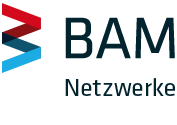
Source: BAM
The event, co-organized by the German Federal Institute for Materials Research and Testing (BAM) and the United Nations Industrial Development Organization (UNIDO), brought together over 100 participants worldwide to explore how digitalization can enhance Quality Infrastructure (QI). Featuring insights into global trends, key findings from international studies, and inspiring best practices from Asia, Africa, Europe, and Latin America the webinar offered presentations and a panel with relevant experts in the field.
Strategic Insights:
- Digital transformation in QI is critical for sustainable development but requires innovation, global collaboration, and knowledge sharing.
- Regional disparities in digital maturity require tailored approaches and investments.
- Stakeholder engagement, regulatory adaptation, and training programs are essential to meeting the demands of a digitalized world.
Webinar: Empowering Quality Infrastructure through Digital Transformation

Activation required
By clicking on this video YouTube videos will appear on www.bam.de in the future. We'd like to point out that after activation, data will be sent to YouTube. You can permanently activate the playback with one click.
Privacy PolicySummary and Downloads
further information
-
Session I: Global status and trends
Dr. Luana Ladu BAM introduced and moderated the webinar
Dorina Nati, UNIDO - Global status and Trends in the Digital Transformation of Quality Infrastructure (QI)
- Current state: Digital transformation is profoundly impacting quality infrastructure (QI) globally, driven by data, technological convergence, and interconnectedness. This shift is transforming all aspects of QI, including standardization, accreditation, conformity assessment, and metrology.
- Enhanced Benefits: Digital transformation in QI improves transparency, trust, accessibility, and environmental sustainability.
- Addressing Inequalities: The uneven pace of digitalization underscores the need to bridge the digital divide and ensure global access to QI systems.
- Evolution of QI: QI must adapt to be demand-driven, integrated, innovative, agile, and responsive.
- Purpose of Digital Transformation: Digital transformation in QI is a tool to achieve broader objectives, not an end in itself.
Dr. Claudia Koch, BAM (Germany) - Digital transformation in Conformity Assessment: International Study Insights & Current Initiatives in Germany
- Dr. Koch presented highlights from BAM’s international study that covered 15 countries and nearly 1,500 Conformity Assessment Bodies (CABs).
- The results show very diverse maturity levels and patterns across CABs and countries. (Find the reports here).
- So far, the latest digital technologies are not yet widely used in CABs, with digital transformation mainly driven by process optimization and efficiency improvement.
- How testing and calibration laboratories can be supported best to digitally transform and adopt digital QI solutions has been jointly elaborated in workshops with more than 100 laboratories in Germany: The most crucial needs identified span from supportive networks, knowledge transfer, suitable regulatory frameworks and business development. BAM will now continue to address these with targeted measures such as creating a dedicated knowledge hub, offering best practices, toolkits, and trainings.
- Establishing strong and long-lasting partner networks to connect stakeholders, pool expertise, and foster co-development will support digital transformation of labs. BAM will offer a permanent digital maturity assessment for regular progress tracking.
- These activities are being realised within the QI-Digital Initiative, in which BAM has joined forces with the central actors in quality infrastructure in Germany to drive digital transformation (QI-Digital website).
-
Session II: Best Practices around the globe
Min Xu, TIC-Council China - Digitalization in the Testing, Inspection and Certification (TIC) Sector
- China has emerged as a global leader in digitalization: Chinese CABs are adapting to the digital transition by taking up innovative solutions.
- Digital technologies streamline TIC sector operations and create new services.
- Coordination among governments and increased investment are essential for progress.
Jon Malolela, Tanzania Bureau of Standards - Digitalization in Standardization
- Digitalized QI Systems enhance competitiveness in global markets and reduce compliance costs.
- Enhanced transparency and easier access to information has improved public trust and boosted confidence in Tanzanian products, especially in sectors like agriculture, pharmaceuticals, and manufacturing.
- Support for Innovation and Entrepreneurship: Digital tools have empowered SMEs to navigate regulatory processes more easily, encouraging innovation and facilitating market entry.
Diego Rodriguez, Colombia´s National Accreditation Body – ONAC, Colombia, Digital Transformation in the Accreditation Process
- Mr. Rodriguez showed how accreditation can be digitally transformed from paper to data, showcasing the success of ONAC's digital transformation. This includes the digital platform SIPSO, that enables digital assessments, 24/7 notifications, contract signing, and real-time data visualization.
- Assisted reality glasses support remote monitoring and optimize processes. Accreditation data can be used for advanced data analytics to improve decision making.
- Benefits of these transformations include improved efficiency, transparency, process management and accessibility to information, strengthening the quality infrastructure through advanced digital tools.
Alessandro Nisi, Italian´s National Accreditation Body, ACCREDIA - Italy: Artificial Intelligence and Accredited Conformity Assessment
- Mr. Nisi highlighted the need for QI to find ways to deal with AI and other new technologies and evolve accordingly. Specifically, AI needs standards and conformity assessment to ensure trustworthiness and quality.
- Ethics for AI: focuses on reducing biases, ensuring fairness and fostering transparency.
- The European AI Act (AI Act) proposed a four levels risk-based approach (Unacceptable, High, Limited, and Minimal) to balance technological growth with societal safeguards, focusing on fairness, transparency, and bias reduction.
- Proof of concept (PoCs) platforms test to test AI systems’ compliance with standards, highlighting the potential role for accredited conformity assessment.
-
Session III: Expert panel: Unlocking Opportunities through Digital Transformation in Quality Infrastructure
Panellists
- Ms. Martha Mejia – Mexican´s National Accreditation Body – EMA, Mexico
- Dr. Sascha Eichstädt – German National Metrology Institute – PTB, Germany
- Ms. Nesreen Al-Khammash – International Standardization Organization - ISO
- Mr. Brahim Houla – International Accreditation Forum - IAF
- Mr. Steve Sidney - National Laboratory Association – South Africa - NLA-South Africa
- Panel moderated by: Ms. Amelia Espinoza Tiffer - UNIDO
Challenges and requirements for a successful digital transformation
With a South African perspective, Mr. Sidney pointed out that despite the opportunities of digitalization in QI, power instability, lack of resources (including financial resources, human resources, skills), and infrastructure gaps hinder digital transformation, especially for small organizations. Information and resources need to be made available. Governments must align to address these gaps. He further emphasized the role of data quality that needs to be prioritized: “Garbage in, garbage out”.
Ms. Mejia adding from a Latin American perspective, pointed out that data security and compliance with standards and regulations are essential for digital transformation. For her, access to information, collaboration, skill-development, and strategic alliances are critical.
Strategies and best practices to tackle challenges of digital transformation
Highlighting the Standardization perspective (ISO), Ms. Al-Khammash emphasized the important role of digital maturity assessments and the development of accordant tools.
- The upcoming ISO’s Digital Capability Maturity Assessment Model helps national standardization bodies and other QI players assess their digital capability and strategize their digital transformation.
- Based on the assessment, capacity building activities will be provided to support digital transformation.
- Measuring performance is key to aligning corporate and digital transformation strategies.
Strategies and best practices to tackle challenges of digital transformation
From his Metrology perspective (PTB), Dr. Sascha Eichstädt (PTB), illustrated that digitalization demands implementation of internationally standardized solutions, harmonized interfaces – but specifically also cultural change.
- Not only are stable power, internet access, and standardized representations of units of measurement prerequisite for success.
- Rather, digitalization must encompass all QI pillars, fostering collaboration and interoperability across standardization, accreditation, and metrology. Initiatives on an international level are needed to promote coordinated efforts, and a shared commitment to digital transformation.
How digitalization can foster the linkages between the different actors
Mr. Houla called to foster linkages between the different actors.
- Interoperability through machine-readable standards and coordinated systems fosters global integration, transparency, and inclusivity. Ro this end, coordination is vital at both regional and national levels to avoid duplications, share experiences, and ensure alignment among QI stakeholders. Partnerships across public and private sectors will help leverage digital transformation, enhancing participation in global value chains, and empowering developing economies. Pilot programs and capacity building are needed.
- From his accreditation background, he further pointed to multilateral recognition arrangements expanding to cover the new management systems for technologies for AI.


